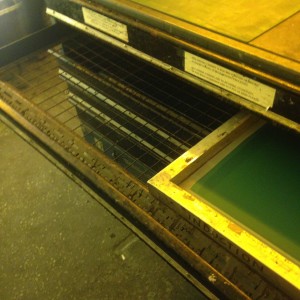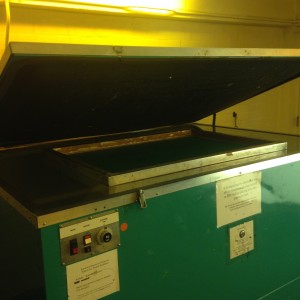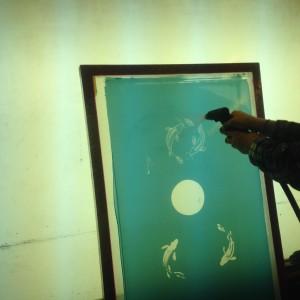lithography – 10-02-17 / 17-02-17
Over the past two fridays I have completed the lithography workshop. Week one we created our plates. I was interested in the examples shown of photographs that had been printed so I decided to do a print of me, my brother and my grandma, because I thought it could link it to my memories project.
The speed of creating the plates was impressively fast, which is something that I can see attracting me to this technique in the future in circumstances where I wish to churn out a lot of prints in a smaller time frame. Also the range of textures that can be created using this technique is really impressive. Jane kindly made a mock up print go different textures we could create and what she had used to create them (i’ve inserted a picture at the bottom of the post).
I really enjoyed the process of lithography printing, the press was really satisfying to use and it was really fun to see the ink transfer from the plate to the roller to the paper. There are a lot of steps to remember for example keeping the plate damp whilst inking, but I love that if you make a mistake whilst inking its quite easily rectifiable.
Overall this printing process was really fun and I will definitely keep it in mind for future projects.
Here are some images of my process and final image.














